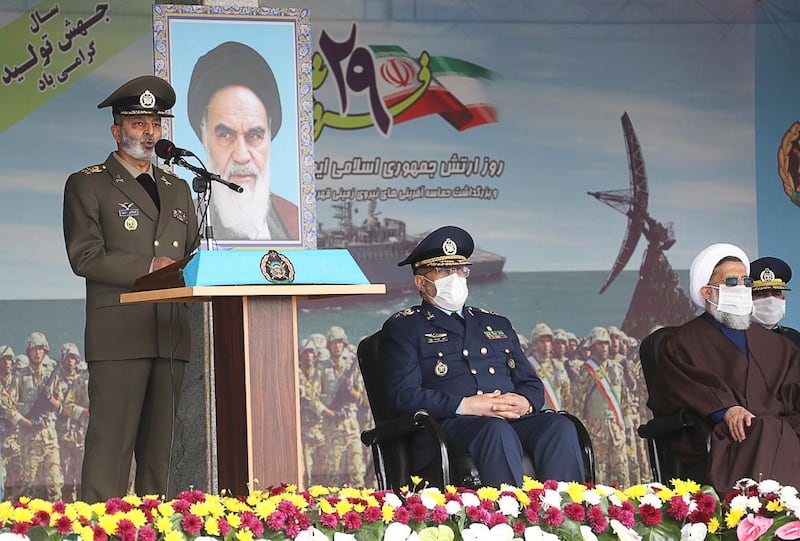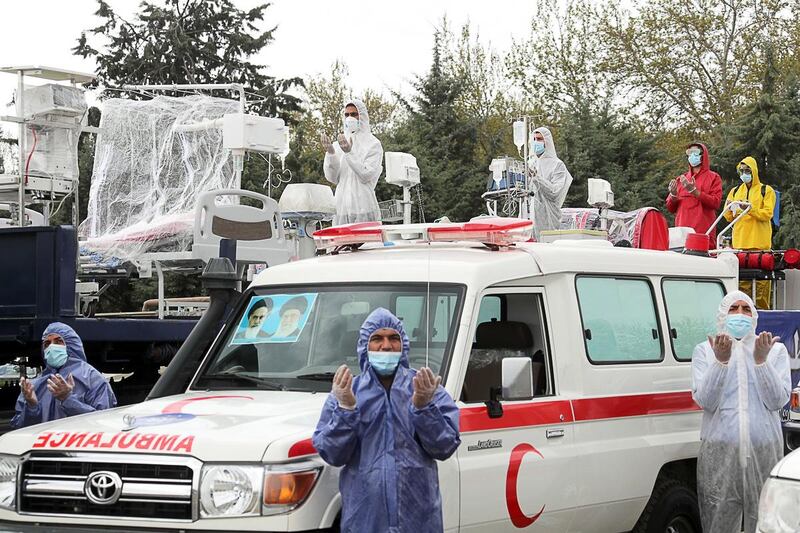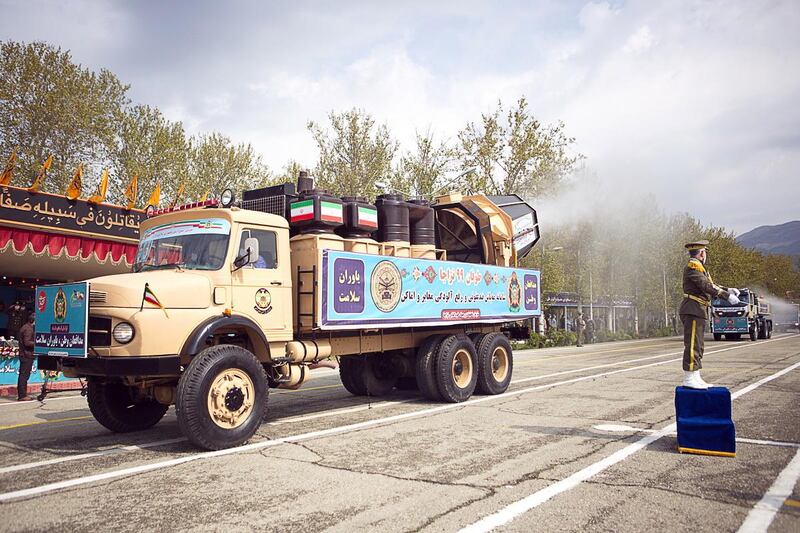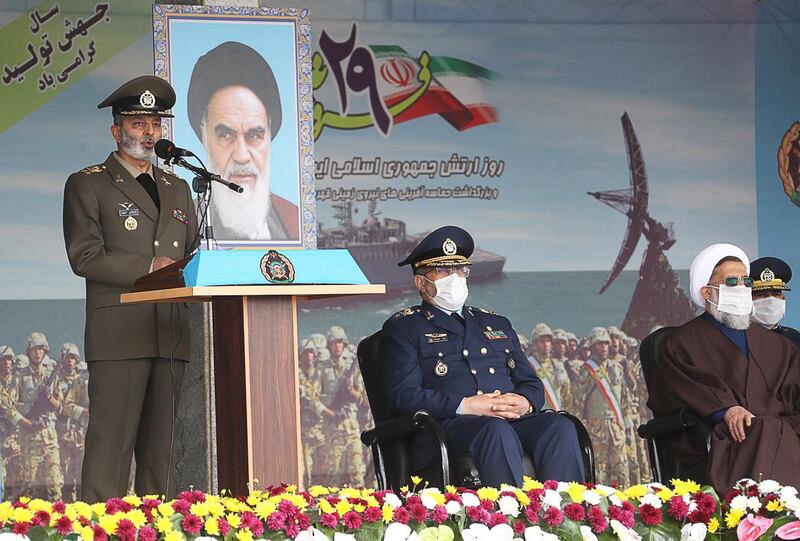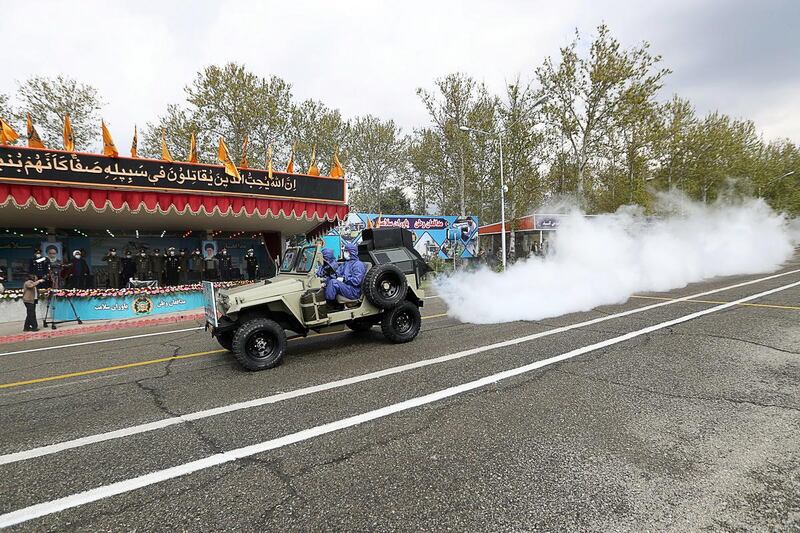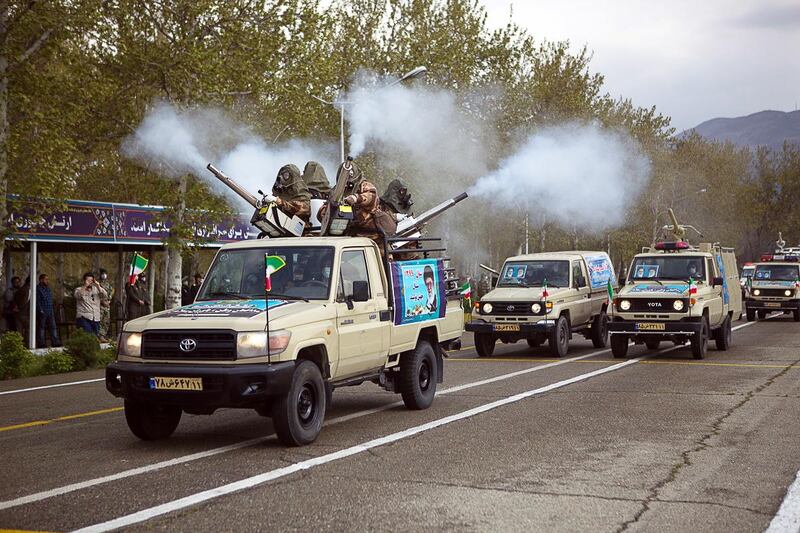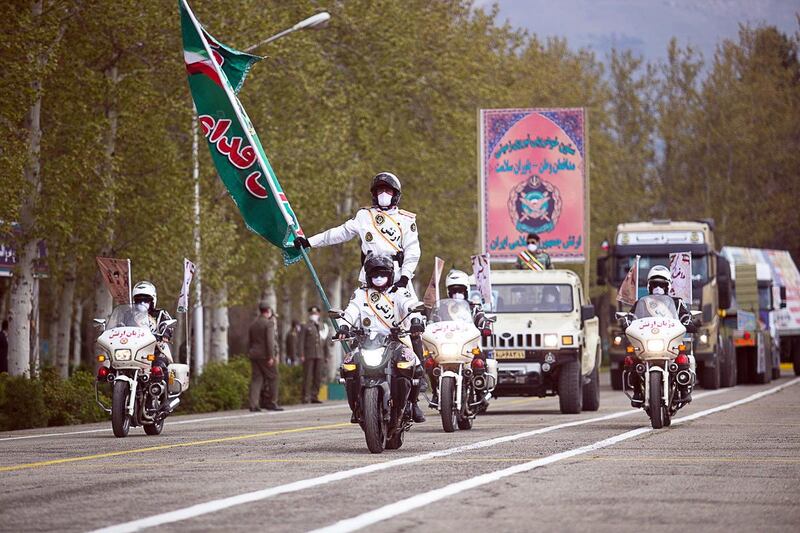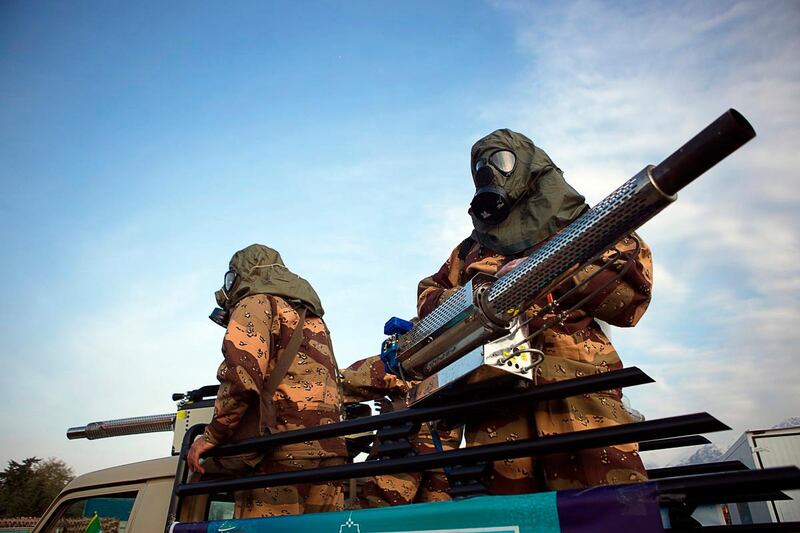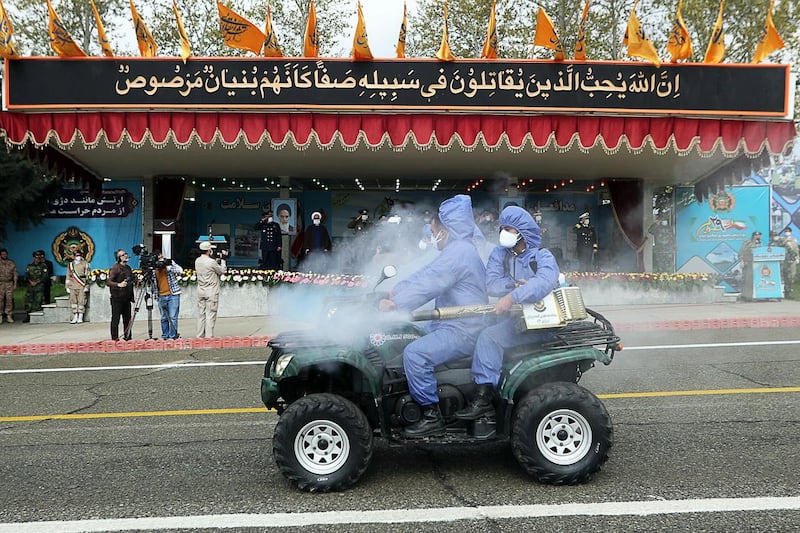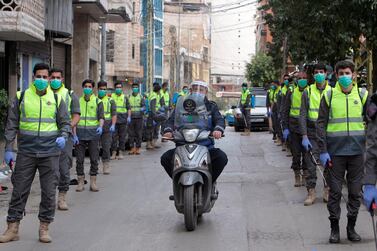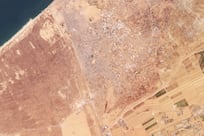Iran's armed forces have acquired three weapons capable drones with a range of 1,500 kilometres, Defence Minister Amir Hatami said on state television.
The drones could monitor "enemy movements from a considerable distance" and could carry a combat payload, he said at a delivery ceremony in Tehran on Saturday.
The vehicles could fly at an altitude of up to 45,000 feet (14km), he said, without revealing the name of the new drones. They were built by Iran's military industry with the participation of universities, he said.
Iran has been a pioneer in attack drone technology despite international sanctions that have cut it off from arms markets for decades.
Air force head Brig Gen Aziz Nasirzadeh said on Saturday that the country was one of the world's five leading drone producers and claimed, "no country in the region has the technology we use."
Iran marks National Army Day with coronavirus parade
Drones are a key element in Iran's border surveillance, especially the Gulf waters around the Strait of Hormuz, through which one-fifth of the world's oil supply is shipped.
Tensions between Iran and the United States have reached their highest levels in decades since the United States killed Iranian General Qassem Suleimani in a drone strike in Baghdad on January 3, prompting Iran to fire missiles days later at bases in Iraq where US troops are stationed.
Although hampered by sanctions, Iran's arms industry has produced dozens of variations of high-tech equipment for export. Iran and its proxy forces, such as Hezbollah, are experts in using ballistic missiles, and the US has accused Tehran's space programme of being a cover for development of nuclear-capable long-range missiles – a claim Iran denies.
Iran is also accused by the US and other countries of responsibility for an attack on Saudi Aramco oil facilities last September. Intelligence suggested that a combination of 25 missiles and drones was used. The attack knocked out around 50 per cent of the Saudi Arabia's crude oil production for several days.
Brig Gen Nasirzadeh said that 10 Ababil 3 and a number of Karar and the unnamed multi-purpose jet-powered drones had been delivered and production was increasing.
"Initially, unmanned reconnaissance aircraft were used. With the development of this type of aircraft, in addition to reconnaissance, it has also become a combat aircraft," state media quoted him as saying.
"At this stage, we are looking for our drones to be able to carry all kinds of ammunition and cargo [as well as the] ability to carry out missions in an electronic warfare environment and carry smart munitions."
The Ababil 3 was the latest variant of a mid-2000 surveillance drone which is technologically limited compared with modern international counterparts. The early models were reportedly used by Iran during the 2006 Israel-Hezbollah war, as well as in operations against ISIS in Syria and Iraq.
The Jerusalem Post reported that the drone appeared to be based on the South African Denel Dynamics Seeker, which itself was based on Israel's Hunter or Mastiff drones.
Brig Gen Nasirzadeh said that while the Ababil series was initially a reconnaissance craft, "the third generation is reconnaissance-combat, so that the Ababil 3, in addition to being equipped with missiles and smart ammunition, is also equipped with a rocket."
He said the 10 that were delivered to the air force were the latest, combat-ready variants.
The Karar is primarily a training drone but can carry a small number of air-to-ground or anti-ship missiles or bombs. It is based on the US Beechcraft MQM-107 Streaker target drone designed in the 1970s and sold to Iran before the revolution in 1979. However, Iran has made several updates to the model.
Brig Gen Nasirzadeh said Iran had tested the Karar with a 500-pound bomb and it had performed well, adding that the craft can fly at speeds of 900 km per hour at heights of 45,000 feet. The drone is usually used to train air-defence teams and fighter pilots.
"Due to its high speed, it is very similar to jet aircraft and is one of the defence threats that can be practised on, and the air force received a large number of them," he said.
He said that the military was rapidly building the capability and infrastructure at all naval, ground and defence force bases so that all branches of the military would have drone battalions in the near future.
Brig Gen Nasirzadeh also said that tests were continuing on the domestically produced Kaman-12 that he described as one of the world's most advanced drones, as well as variants that could spend up to 24 hours in the air.
He added that Iran's current coronavirus outbreak – until recently the worst in the region – had not affected the readiness of its armed forces.
"The part of the army that is carrying out actions to the aid people has nothing to do with the combat readiness side and is often a support force," he said. "Our combat capability has not diminished with coronavirus measures, but it is a very good exercise in how to maintain and improve our combat readiness in such situations."
